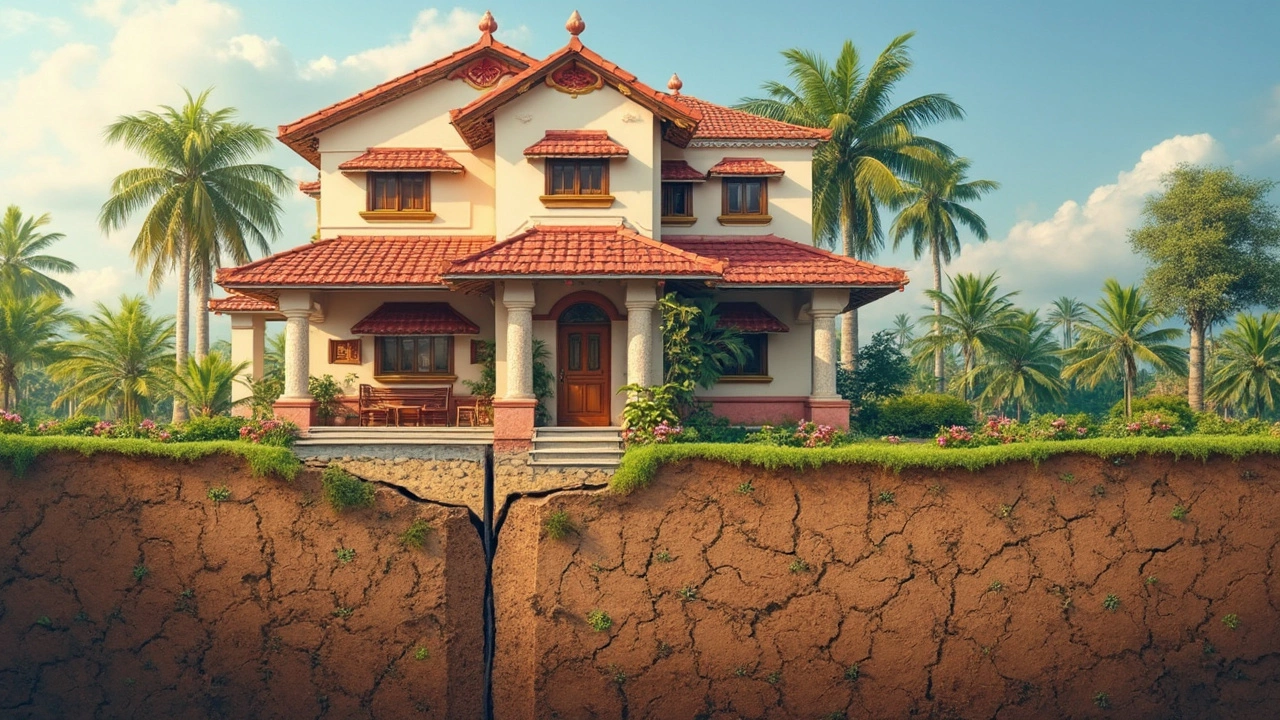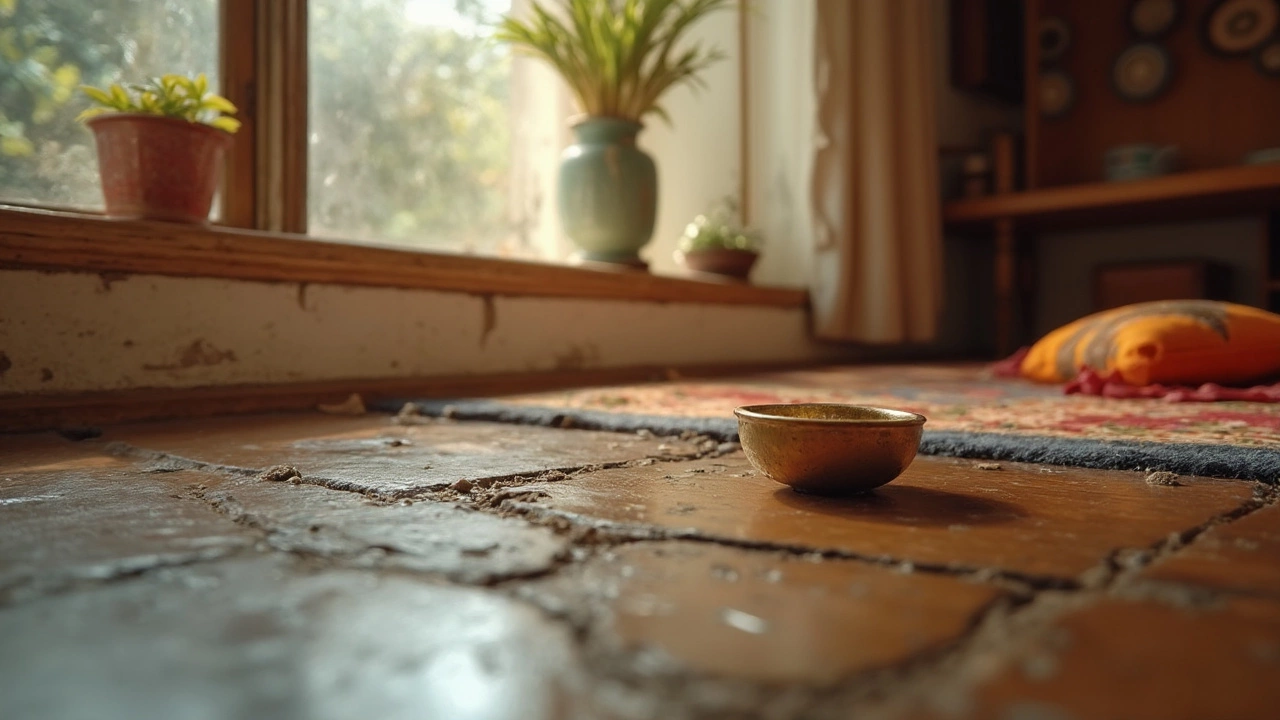How to Fix a Sinking Foundation: Quick and Effective Solutions

So, you've noticed some cracks in your walls or doors that just won't close right? These might be signs of a sinking foundation. But before you panic, let's dig into what you can do about it. First things first, understanding these symptoms early can save you a lot of hassle and money.
Foundations start to sink usually because of one main villain: soil. Yep, that dirt under your house can shift, expand, or contract with water changes. This movement messes with your foundation, leading to all sorts of problems indoors. We’ll look into those annoying warning signs and what they mean for your home.
Fixing a sinking foundation isn't a DIY project you should tackle alone. There are specialized repair techniques out there. Ever heard of underpinning? It's a popular method where contractors strengthen the foundation by extending its depth or breadth. There are others, too, depending on your specific situation. Knowing your options can guide you in choosing the best path forward.
- Identifying the Signs of a Sinking Foundation
- Common Causes and Why They Matter
- Popular Repair Techniques Explained
- Preventative Measures to Avoid Future Problems
Identifying the Signs of a Sinking Foundation
Realizing you've got a sinking foundation can sound pretty daunting. But the good news is, if you know what signs to look for, you can catch it early and reduce the potential damage.
Cracks in Walls
One of the most obvious indicators is cracks. If you start seeing them in your interior or exterior walls, particularly around door frames and windows, it's time to take a closer look. Horizontal cracks may suggest the foundation is moving sideways, while vertical ones might indicate settling.
Sticky Doors and Windows
Doors and windows that suddenly become difficult to open or close might be telling you something's off. As your foundation shifts, it can misalign door frames and window sills, causing them to stick or jam.
Uneven or Sloping Floors
Feel like you're walking on a slant in your own home? Sagging or sloping floors can be another telltale sign of a foundation issue. Use a ball or a level to test suspected areas—if the ball rolls or the level is off, it's a clue.
Gaps Around Exterior Windows and Doors
When you see gaps around the windows outside your house, it's not just your imagination. These gaps occur because a foundation sinking can create a gap in the wall structure, which could potentially let moisture in and cause bigger problems.
Bowing Walls
In more severe cases, you might notice your walls bowing or tilting. This happens when the pressure around your foundation increases and forces it inward. It’s a sign that needs immediate attention from a professional.
| Signs | Indicators |
|---|---|
| Wall Cracks | Horizontal or vertical near frames |
| Door Issues | Sticking, jamming |
| Floor Unevenness | Sloping or sagging |
Keeping an eye out for these signs can help you act fast. If you're catching more than a couple of these red flags, contacting a foundation repair specialist should be your next move. They can assess the extent of the problem and suggest the best repair method for your situation.
Common Causes and Why They Matter
So, what's causing your sinking foundation? It's crucial to grasp these reasons because they directly impact the approach you'll take to fix the issue. Let’s explore the main culprits.
Water: Friend and Foe
Water is a major player here. Too much or too little can wreak havoc on your foundation. Heavy rainfall can lead to water pooling around the foundation, putting pressure on the structure. Conversely, drought conditions cause soil to shrink away from your home, leading to uneven settling.
Soil Composition
The type of soil your house sits on also matters. Clay soil, for example, swells significantly when wet and shrinks when dry, causing a rollercoaster of movement for your foundation. Sandy soil, however, drains quickly and doesn’t hold as much moisture, but lacks the support needed when dry periods strike.
Poor Foundation Construction
If your home's foundation wasn't constructed properly from the get-go, it might just be a ticking time bomb. Inadequate soil testing or improper reinforcement can lead to a foundation that can't stand the test of time.
Natural Disasters
Don't forget about Mother Nature's big forces like earthquakes or floods. They can shift or wash away soil, leaving the foundation with insufficient support.
Understanding these causes helps you figure out not just the 'why' but also the 'how' in terms of dealing with your sinking problems. It’s like getting all the facts together before jumping into action. The impact of tackling these causes head-on is profound — a stabilized, safe, and long-lasting home.

Popular Repair Techniques Explained
Facing sinking foundation problems? Don't worry, there are reliable ways to bring stability back to your home. Let’s dig into some of the popular methods to fix the foundation.
Underpinning
Underpinning is a common technique used to repair foundation issues. It involves strengthening the existing foundation by extending it deeper or wider to more stable soil. Think of it as giving your home new, stronger legs from beneath. Contractors usually jack up the house and place new piers deep into the soil to support the existing foundation.
Slab Jacking
Does your home sit on a concrete slab? Slab jacking could be the answer. This method involves pumping a grout mix beneath the slab to lift it back to its original position. This is often quicker and cheaper than replacing the whole slab! It's especially handy for smaller homes where intrusive digging isn't practical.
Helical Piers
Helical piers are steel shafts with blades attached that screw into the ground. They're used when the goal is to get to more stable soil way down below. Because of their shape, helical piers can be adjusted even after installation. They provide fantastic support for areas with significant soil issues.
Here’s an interesting fact – did you know that in 30% of cases, homes with structural issues because of a sinking foundation have seen substantial recovery with this technique?
Crawl Space Support Jacks
If your home has a crawl space, support jacks might be your fix. By setting adjustable jacks in key areas of the crawl space, the floor above can be stabilized, reducing sagging and preventing further settlement. It’s like giving your floor a much-needed lift!
Mini-Piles
For cases where access is tough, mini-piles can be a good option. These tiny piles can be installed with minimal disruption to your garden or landscaping. The method is ingenious for working confined spaces.
Choosing the right repair method depends a lot on your particular situation. A professional assessment often directs you to the best technique for your home. A qualified foundation repair expert can help weigh the pros and cons, considering factors like cost, time, and effectiveness to get your home back in shape!
Preventative Measures to Avoid Future Problems
So, you've tackled the immediate sinking foundation issues, but how do you stop it from happening again? There's good news—you can take some pretty straightforward steps to keep your home's foundation in tip-top shape.
Avoiding Excess Water
Too much water around your house's base spells trouble for your foundation. Make sure your gutters are doing their job by directing rainwater away from the house. Think about installing splash blocks or extending your downspouts. Both are simple fixes that can make all the difference.
Also, check how the ground slopes around your home. It should gently slope away from the foundation to prevent pooling. If water is still an issue, consider more the robust solution of a French drain.
Taking Care of Trees and Shrubs
Believe it or not, those lovely trees near your home? They might be causing more harm than good. Roots can suck up moisture, causing soil to shrink more rapidly. Be mindful of where you plant new trees. As a rule, keep them at least their mature height away from your house.
Monitoring Soil Conditions
Keeping an eye on your soil is another way to predict structural issues early. During dry spells, water the soil around your foundation to avoid shrinkage. Be regular about inspections, especially if you live in an area known for quirky soil.
Regular Inspections and Maintenance
Make it a habit to walk around your house every few months to check for new cracks or slight shifts. Hiring an inspector every few years isn't a bad idea either—they might spot issues before you do. A little maintenance goes a long way.
| Preventative Measure | Benefit |
|---|---|
| Gutter Maintenance | Prevents water buildup |
| Tree and Shrub Placement | Controls soil moisture levels |
All these small steps can drastically diminish the risk of a sinking foundation. The key is consistency and vigilance—you want to catch any potential issues and address them before they become costly repairs. Keeping up with these preventive measures will not only help in maintaining your home but also boost its overall value.

